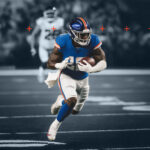By Dr. Martin Buchheit, Head of Performance Research, Stephen Smith, CEO, Maxime Settembre, Data Scientist, Karim Hader, Performance Strategist and Dr. Derek McHugh, Head of Data Science
Everything in life is about balance. From ancient Greek history, we have learned that balancing work and recovery is compulsory for optimal health and performance.
Considering that we need to compete every week during the professional sports season, we do not program blocks of work for several weeks or months. Instead, we focus on turnaround management, which is the period between two games varying from 3 to 8 days during the in-season.
The key questions for practitioners becomes how to balance those blocks of word between two matches: what to program, how, and when?
As part of the Performance Intelligence Research Initiative (PIRI), we started to ask these questions directly to club practitioners (Buchheit et al, 2021). The survey and the results that we pulled together showed some consistency in terms of programming for certain contents (e.g., when to program some heavy gym exercises), but large variability in others (e.g., when to sprint maximally). To clarify some of these inconsistencies, we have begun an extensive research journey that addresses all of these questions. Bear in mind that there is no perfect answer since there are some things that we will never capture with data, but we believe the challenge is worth the effort.
The first part of our journey looks at the when: when to load and when to unload, and more precisely when to rest and stay off the pitch. We also examine when it may be better to sprint maximally during the turnaround, and how this is related to injuries.
We understand the limitations of our research.
We know that looking at associations between events precludes making inferences about causality, and we know too well that injuries are multifactorial (McHugh D & Buchheit). Accordingly, the simultaneous consideration of player profiles (e.g., age, injury history, strength, mobility or flexibility) and other measures of internal training load and responses to load should also improve the analysis – while making the current outputs less straightforward for practitioners. There is in fact a trade-off between the desire for simple questions to have simple answers (e.g, when is it best to rest?) and more sophisticated analytic approaches that may have more precision but require more effort to interpret in order to provide direct applications (i.e. results of multivariate analyses can be difficult to translate into simple yes/no answers).
We started this research by aggregating data from 18 elite football teams. Combining the current data we have with the type of analysis we have run, we found that resting two days after a match was associated with fewer non-contact injuries in some circumstances, as opposed to when the rest day was not programmed at all, or programmed on another day of the turnaround.
Similarly, we found that players tended to suffer from fewer match-related hamstring injuries when they had been exposed to near-to-maximal speed two days before their match, as opposed to when these exposures didn’t happen at all, or when they occurred at another time during the microcycle.
The results in this research aren’t intended to become guidelines for individual teams since we recognize that every team is different, and the importance of context should never be underestimated. However, this process and analytical framework could certainly be adopted to help teams develop their own guidelines using a company like Kitman Labs or through other analytics solutions.
Stay tuned for more exciting content since we continually improve our analyses and examine the ‘what’ and the ‘how’ in new PIRI research.
References
- Buchheit M, Settembre M, Hader K and McHugh D. (2022). Planning the microcycle in elite football: to rest or not to rest? SportRχiv
- Buchheit M, Settembre M, Hader K and McHugh D. (2022). Exposures to near-to-maximal speed running bouts during different turnarounds in elite football. SportRχiv
- McHugh D & Buchheit, M. Analytics For Sport Performance And Health: A Reality Check. Kitman Labs Website. Last accessed April 4, 2022.




